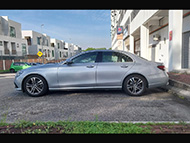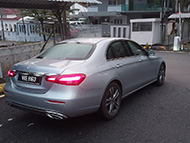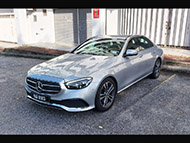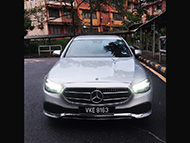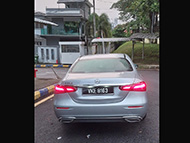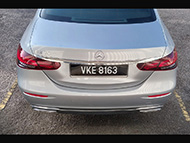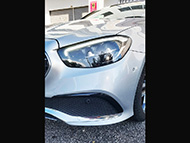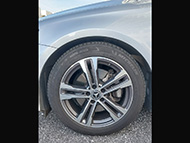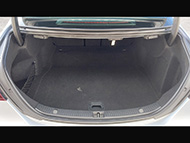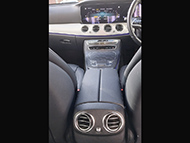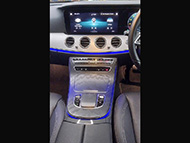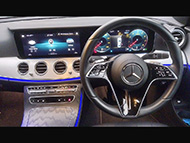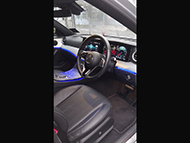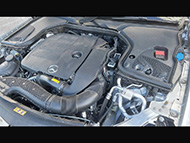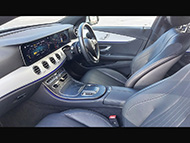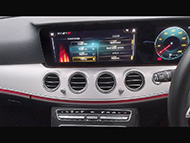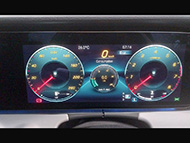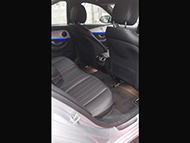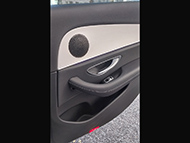By Lee Pang Seng
THE Mercedes-Benz E-Class is the model that bear the three-pointed star prominently as an executive sedan in the world market. Given its successful grounding over the years since its early days in the late 1940s, the E-Class had been poised to clearly reflect a person’s social standing.
Changing vehicle owner tastes with the advent of new models and trends, such as that for SUVs (sport utility vehicles) might have watered down that premium acknowledgement a little. Nevertheless, the E-Class still commands that respect, never mind the model variant within its ranks.
Thus, the latest E 200 continues to fulfil that appetite for a premium standing. Moreover, at RM349,888, the E 200 is certainly a worthy yardstick of one’s social status. We had a few days with this E-Class ‘limo’ to try and measure up to its widely accepted perception.
After all, we aren’t new to Mercedes-Benz car ownership… having owned a 240E W124 for nearly a decade and a C 200 W204 currently in our garage. Of course, the E 200 is a car of modern times and is fully decked out with all the user conveniences that a driver has come to expect of a premium sedan today.
The wide new-generation MBUX (Mercedes-Benz User Experience) multimedia infotainment façade gives the dashboard its extra glitter and dazzle without being too striking and distracting. It actually comprises two 12.3-inch screens that merge seamlessly. We like the capacitive touchscreen convenience in selecting the respective functions and adjusting them to our preferences.
In addition, this capacitive swipe feature is also on the steering wheel controls with which a swipe up or down could adjust the music volume accordingly; likewise, for the cruise control selection. So easy and convenient.
There is another capacitive function here too that acts as an active safety tool; our grip on the steering wheel, wrapped in ‘genuine leather’. It comes with a pad with the appropriate sensors on the rim that register whether the driver is holding the steering wheel. If the system detects that the driver does not have his hands on the steering wheel for a certain time, a warning signal is activated. And if the driver continues to be inactive in this area, the system activates the Emergency Brake Assist.
Mercedes-Benz’s explanation of the rationale in going capacitive for the touch controls instead of optical is that there is no longer a need for a mechanical system, necessary for the latter. It also reasons that the touch surfaces with the capacitive function are also less susceptible to fingerprints.
Whatever it is, it certainly adds to the pleasure of driving the E 200. The ambient lighting also adds a nice touch of class and after sampling the alternative hues, we decided that blue was the calming one for us. The light purple tint wasn’t too bad either being subtle rather than overly bright, which we had come across in other premium cars and vehicles.
Driving a Mercedes-Benz is also made a lot simpler with the use of a steering column gearshift. Flick it down hard to get D(rive) and flick it up hard for R(everse). A gentle nudge towards the centre would select N(eutral). And when you park the car, just press the lever head down to put it in Park mode. No need to pull a lever from under the dashboard to release the parking brake or step on a floorboard pedal as in our C 200 W124 when parking.
Easy and convenient once you get used to it. Those who like to ‘play’ gears, especially with an automatic shift in Sports mode, might not welcome this steering column gearshift but hey, this is a premium sedan meant for gentler driving. After all, having such a design frees up the centre console area for minor storage capacity.
The centre console has a big storage compartment with cover to complement the unit between the seats. It also accommodates the controls for air-conditioning as well as for the centre info display above. However, the wavy pattern of the console surface leaves some to be desired as it looks a bit messy and dirty, which is a bit of a downer for a premium sedan.
Settling comfortably to the driver’s seat is almost a natural thing as the strong lateral support complements the firm yet comfortable feel of the seat cushion. The overall sculpture of the seats in general is meant to accentuate the sporty aura of the interior. We have driven quite a few Mercedes-Benz models on long distance routes and have enjoyed a comfortable driving experience where seat comfort is concerned.
For a car of its sizeable dimensions, the E 200 has the power to belie its autobahn breeding. The 2.0-litre engine (1991cc) is turbocharged and output is reasonably good with 145kW (197hp) at 5500 to 6100rpm. Torque is impressive at 320Nm that peaks early at 1650rpm and plateaus till 4000rpm. Lots of push power ready to get going quickly.
That explains why we hardly felt the E 200’s kerb weight each time we prompt the accelerator to get moving. Harder prompts would easily get the E 200 going quickly when there is open road to spare or for quick overtaking. Mercedes says the E 200 accelerates from 0 to 100kn/h in 7.4 seconds, which is good enough for a premium sedan. Top speed is 240km/h which is academic unless you are aiming for a speeding ticket.
With good electronic engine management and a nine-speed automatic transmission, the E 200 could be just as light on fuel consumption too. Mercedes says it is capable of returning 6.9-6.5 L/100km (15.38-14.49km/l) on average and our weekend drive (mostly city driving) didn’t disappoint in that respect. For sure, the E 200 certainly seemed a lot less thirsty compared to the 2.3-litre 230E that we once owned.
There is an auto stop function that cuts off the engine when we come to a stop at traffic light junctions or waiting for someone. It restarts if the battery charge drops to a certain point or when we are ready to move. The restart part is a bit jerky though, especially when compared to a similar function in another of the vehicles in our garage. That would be something for the Mercedes engineers to try and smoothen out for future models.
We have not taken the E 200 through long stretches of winding roads but we are happy with how we could drive this Mercedes sedan pretty quickly through some of our favourite bends and sweeping curves. For a car of its expansive dimensions, the suspension is well sorted out to keep it stable and well poised through the turns. We like the good steering feedback too as we didn’t have to guess how the front wheels were pointing as we drove fast through winding curves.
City driving was also fully enjoyed for the ease of driving in tight situations and for the suspension’s capacity in ironing out bumpy and rough road surface patches. As we like to drive at a higher seat level (via electronic driver seat adjustment), we could ascertain the car dimensions better when moving along narrow or tight road sections.
There might be a slightly hard note to the suspension’s damping quality when going over bumps or potholes but it was not a jarring one. This is something that we are quite used to in Mercedes-Benz vehicles and the ride comfort is generally up to par, even with four people on board.
The E 200 comes with 245/45 R 18 Michelin Primacy 3 tyres that complemented the car’s suspension design reasonably well. However, the higher noise generation of the tyre treads over some road surfaces came through a lot more than we expected. Perhaps, the Mercedes engineers could look further into suppressing the transmission of tyre noise into the passenger cabin too.
Despite these little dents in its shining armour, the E 200 Avantgarde lived up to most expectations. It ran quietly on the short highway stretches we took it through, allowed us to cover a lot of places with its fuel sipping ways and its extensive package of electronic conveniences and safety equipment was fully enjoyed. It easily lived up to its image as a status bolstering premium sedan and we could foresee the E Class retaining its status quo for a good long while.
